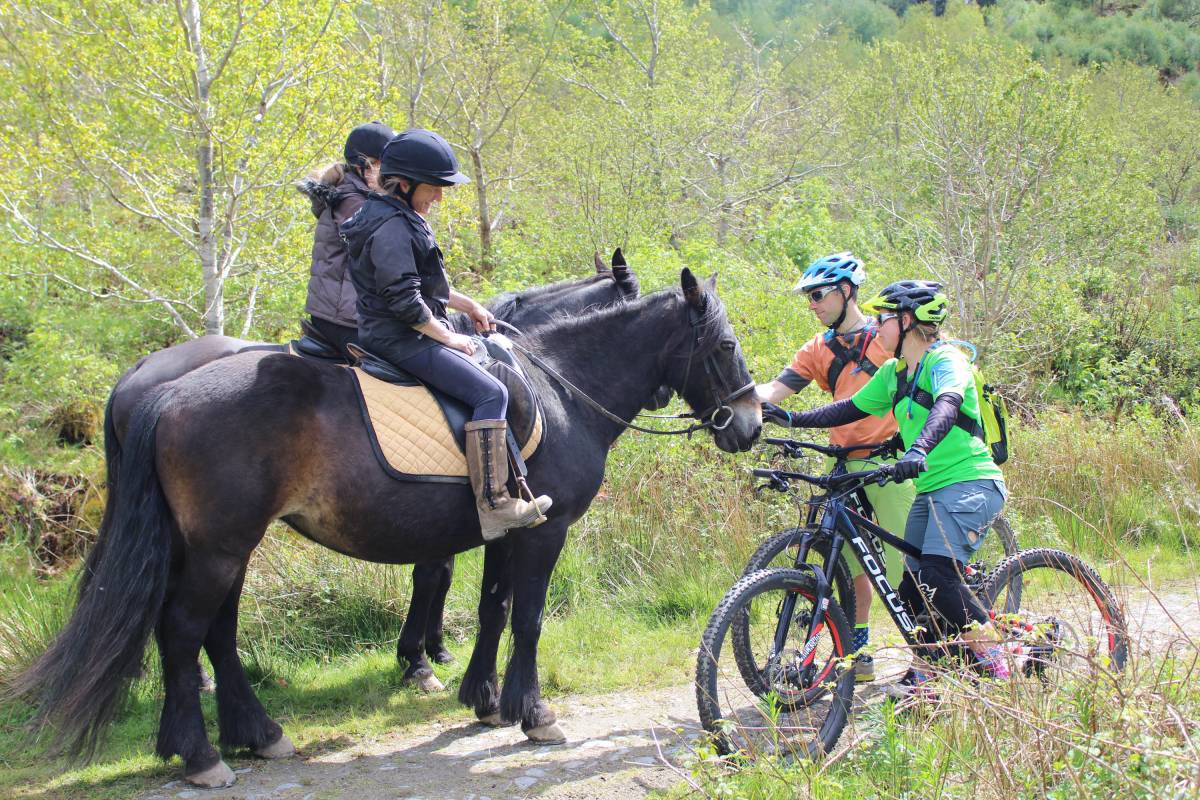Riding a horse and riding a bicycle may seem like two vastly different activities on the surface, but when you delve deeper into the experience, you’ll find that there are surprising differences that set them apart. The feeling of control and connection with the animal beneath you while horseback riding is a stark contrast to the sense of freedom and speed you get when pedaling on a bike. Both activities offer unique challenges and rewards, making them popular choices for outdoor enthusiasts and athletes alike.
In this article, we will explore some of the key differences between riding a horse and riding a bicycle, examining the physical, mental, and emotional aspects of each. Whether you’re a seasoned equestrian or a dedicated cyclist, you’re sure to gain a new perspective on these beloved pastimes.
Physical Differences: Understanding the Unique Challenges of Riding a Horse vs. Riding a Bicycle

Riding a horse and riding a bicycle may seem similar on the surface, both involving balancing on a moving object, but the two experiences are actually quite distinct due to the physical differences involved. Horseback riding requires the rider to have a strong core and leg muscles to maintain balance while also developing a unique connection with the animal. It involves coordinating with the horse’s movements and using subtle cues and body language to communicate effectively.
In contrast, riding a bicycle primarily relies on the strength and coordination of the rider’s legs and arms to pedal and steer the bike. Additionally, the rider must balance the weight of the bicycle itself, making quick adjustments to navigate different terrains. Understanding these unique challenges can help riders appreciate the differences between the two activities and improve their skills in each discipline.
The Mental Demands: Comparing the Cognitive Skills Required for Riding a Horse and Riding a Bicycle

When comparing the mental demands of riding a horse versus riding a bicycle, it becomes clear that both activities require a unique set of cognitive skills. Riding a horse involves constantly assessing your surroundings, communicating with the animal through body language, and making split-second decisions to navigate obstacles.
The rider must also be able to anticipate the horse’s movements and react accordingly to maintain control. On the other hand, riding a bicycle relies more on physical coordination and balance, but also involves strategic planning to handle changing terrain and traffic patterns.
Both activities require focus, quick thinking, and the ability to adapt to unexpected circumstances, making them challenging and exciting endeavors for those who enjoy the thrill of outdoor sports.
Safety Considerations: Exploring the Risks and Precautions Involved in Horseback Riding vs. Bicycling

When it comes to safety considerations in horseback riding versus bicycling, there are unique risks and precautions to be aware of for both activities. Horseback riding presents a higher risk of injury due to the unpredictable nature of horses, such as spooking or bucking.
Riders must be cautious and skilled in handling their horse to prevent accidents. Precautions such as wearing a helmet and appropriate riding gear, as well as receiving proper training, are essential for safe horseback riding. On the other hand, bicycling carries its own set of risks, particularly in urban areas with heavy traffic. Cyclists must be vigilant and follow traffic laws to avoid collisions with vehicles.
Wearing a helmet and reflective clothing, as well as using proper hand signals when turning, can help increase safety while biking. Ultimately, both horseback riding and bicycling can be enjoyable activities with the right precautions in place to prevent accidents and injuries.
Conclusion
In conclusion, it is evident that there are noticeable differences between riding a horse and riding a bicycle. While both activities offer their own unique benefits and challenges, riders must consider factors such as balance, coordination, and communication when choosing between the two. Whether enjoying the freedom of a horseback ride through the countryside or the exhilaration of racing down a mountain on a bicycle, riders must prioritize safety and proper training to fully appreciate the experiences each activity offers.
For horse riders, it is crucial to be aware of common issues such as Horse Thrush Treatment and to proactively seek proper treatment to ensure the well-being of their equine companions. Ultimately, both horseback riding and biking offer unique opportunities for adventure and connection with nature that can be enjoyed by riders of all ages and skill levels.






